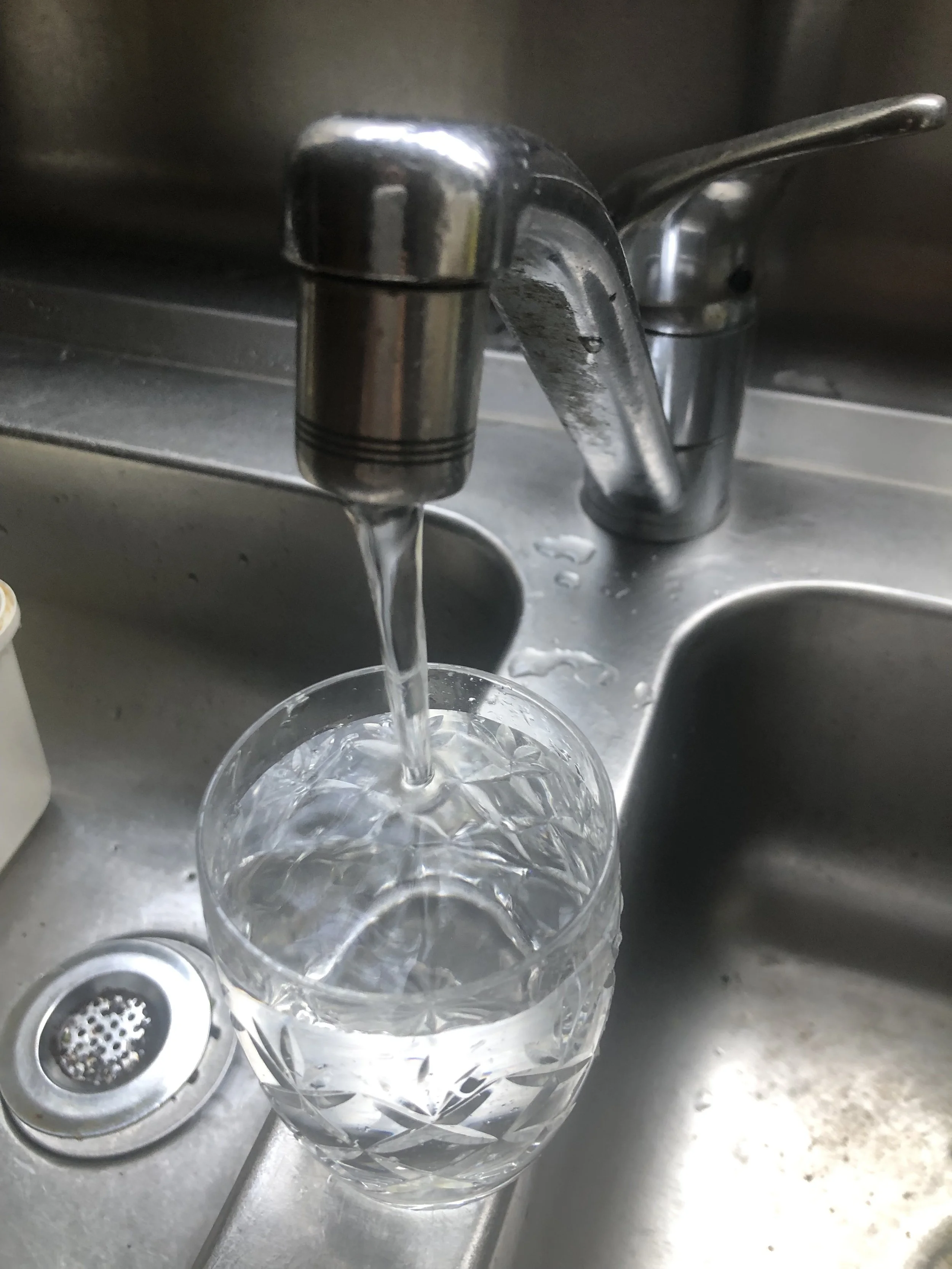• Rainwater is used for drinking, cooking, showers, hot water . . . yum
No stormwater, no torrential rain has left Sydney’s Sustainable House since it was made off-grid in 1996. Even the weeks and months of rain in Sydney has been kept here. Here’s how the ‘leaky well’ works . . .
All water from the house roof drains to an underground 10,000 litre concrete tank.
When the rain tank overflows it flows into a leaky well.
The well is 1 metre square and 1.4 m deep. There is a waterproof base about 150 deep to provide a permanent water home for frogs, tadpoles and water-loving plants.
The well wall is made of recycled sandstone blocks found on the site. The gaps between the blocks are open and no cement or mortar is between them. This is called a ‘dry wall’. Sand about 30 cm deep surrounds the external face of the sandstone blocks.
Water that overflows from the tank flows sideways into the surrounding sand and then the soil beyond. The soil down below there is not waterlogged from the rain and absorbs and disperses the water. During peak rainfall when there is about 150 mm an hour the water in the well rises. The highest the water has risen is level with the top of the sandstone blocks during an extraordinary storm about 15 years ago. The well remains about half to two thirds full during the constant, driving rain we’re having in Sydney this past week and at similar periods over the last two years.
• There is a grate over the leaky well to prevent people and things falling in
Cheap, easy to build and almost no maintenance.
The water flow on the site has been restored to mimic the pre-development flow when about 80 to 90% of rain stayed on site, kept there by trees, vegetation and rich soil. This typical flow is reversed by development of houses, roads and the cutting down of trees and plants. But with leaky wells we can restore the former flow if we wish on our own land.
Similar solutions are available in public land on road verges and roads but rarely implemented.
In Chippendale we keep over a million litres of stormwater in our road verges with ‘leaky drains’ we have built in the road verges and a video about how to do that is here.
Flooding of the kind happening now in Sydney is contributed to by poor road and stormwater design which treats rain as a waste product to be sent away downstream as fast as possible.
• Digging and laying the recycled sandstone walls for the leaky well. It gets more efficient over time and is breaking down the adjoining clay lenses - over 60,000 litres of rainwater has flowed into it from the adjoining rain tank in 2022. Simple, no maintenance, cheap.
The solution to stop flooding at the base or end of catchments is to keep rain water where it falls, both in cities, roads, streets, parks and catchments. This is not taught at universities.
• Tree at Bondi Beach with roots chasing water denied it by the road and footpath design and directed to the fast-draining stormwater system beside it where it goes into the sea people swim in
This photo of a tree at Bondi shows its roots chasing water denied to it by the gutter and verge design of the road but diverted away from it in the drainage system beside it.
May the raindrops be with you and upon your land.
[Data about water quantity and quantity, the impact of drought and floods at the house is in the book, Sustainable House 2 Ed]
• Here is the image to go with Emma’s comment, below; thank you, Gemma






